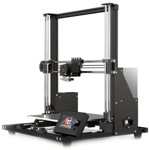If we equated the budget 3D printer market with the historic Gold Rush, the Anet would have to be considered as one of the first to trailblaze the Western frontier and make a success of it. The immensely popular Anet A8, a desktop 3D printer kit, signified a new era of affordability for desktop FDM technology.
Although the Anet A8 was an undeniable success as far as popularity goes, it certainly had a few flaws too, including a lackluster design and electrical issues that made the 3D printer a potential fire hazard.
However, the Anet team is aiming to address these problems with the Anet A8 Plus, a new and improved version of the manufacturer’s flagship 3D printer. It comes in two versions, a kit and a semi-assembled version (which we are reviewing here).
The Anet A8 Plus is nearly unrecognizable from the original A8. It has a new frame design, larger build volume, and a movable display screen, among other intriguing features. Best of all, it can be found for around $300.
How does the Anet A8 Plus stand up to the new class of affordable FDM 3D printers? Let’s sort this out.
Hands On
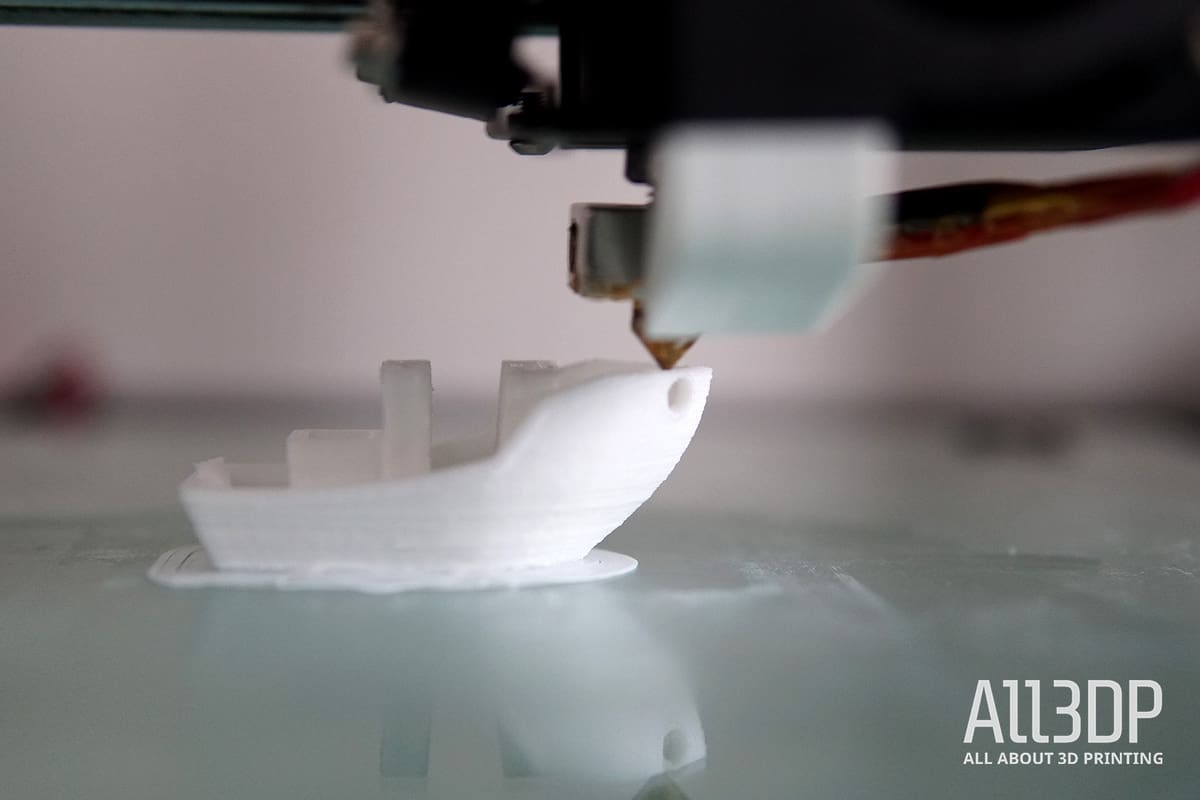
IMPROVED DESIGN
One of the main criticisms leveled against the first Anet A8 was its flimsy acrylic frame. But with the Anet A8 Plus, the manufacturer wisely swapped out this polymer material for aluminum, which makes the latest version much more sturdy and stable.
We were also intrigued by how simple the frame looks, drawing as much inspiration from the minimalistic CR-10-like design as it does from its predecessor. However, like the Anet A8 before it, the Plus has two Z-axis double-threaded rods that run-up in front of the aluminum frame.
All in all, the decision to implement an aluminum frame and new design leads to greater stability and high printing precision.
Anet also offers a substantial build volume increase from the relatively runty A8’s 220 x 220 x 240 mm. The Plus has a respectable 300 x 300 x 350 mm build area to give you more flexibility in terms of the objects you print. And, all this happens on the removable glass bed which, though not particularly exciting, does the job.
As for set up, the A8 Plus needs to be built out of the box, but the assembly process is less time-consuming and difficult than the Anet A8.
LACKLUSTER RESULTS
But of course, none of these upgrades and tweaks count for much if the results are disappointing.
And, spoiler alert, the results were disappointing.
To ease into printing with the A8 Plus and get a decent first impression, we took the machine for a test ride by printing two torture tests on a new, freshly unboxed, and unaltered machine. We used white eSun PLA+ filament, the Cura slicing software included on the provided SD card, and set the hot-end temperature to 215°C and the bed to 60°C.
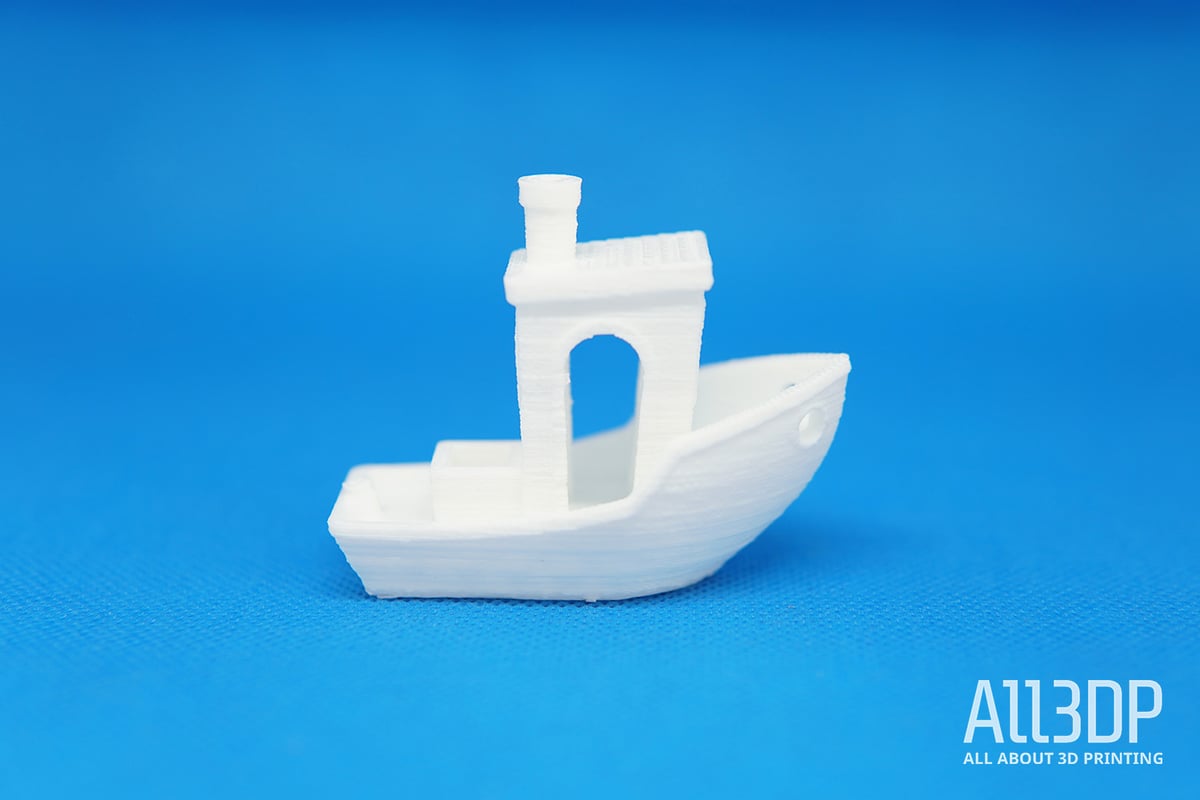
It took us three attempts to 3D print a Benchy. And the results were fairly lackluster. The surfaces had a lot of ghosting and ripples and the details weren’t too crisp. Overall, it was a fairly mediocre print. That being said, it did have good dimensional accuracy.
We also printed an Autodesk Kickstarter test model, which looks at an FDM printer’s precision.
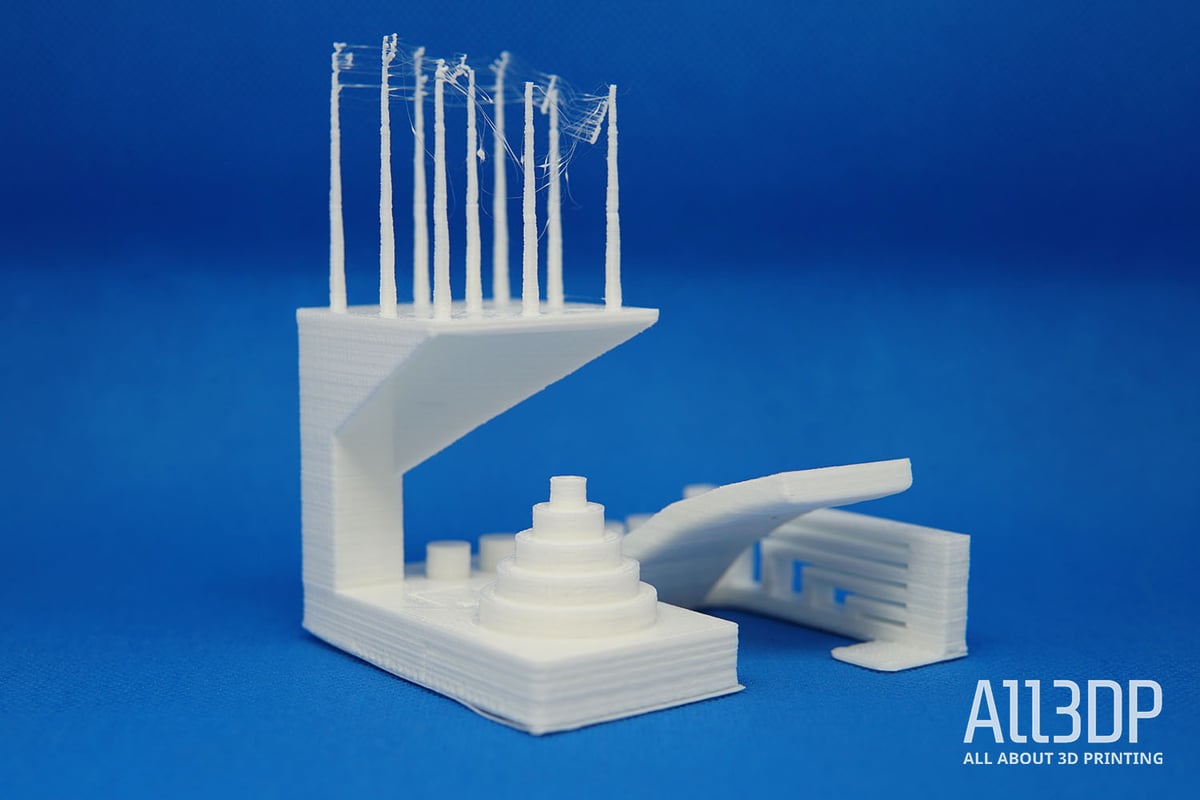
The Anet A8 Plus scored with 13.5 of 30 points, which is an overwhelmingly poor score.
Generally speaking, though we wanted to like this printer and were excited about the substantial changes Anet made to it, the prints were just not up to par. The printer struggled with details, had a lot of stringing, and lacked consistency.
Verdict
Both in dimensional accuracy and visual inspection, the Anet A8 Plus’s results were sub-par. In fact, the performance of the Anet A8 Plus wasn’t noticeably better than the plain vanilla Anet A8, a model that was released four years ago at the time of writing.
That being said, you can likely address most issues you come up against with the A8 Plus if you’re willing to spend some time and deep dive into the settings. On the other hand, though, the competition offers machines that will give you a better out of the box experience.
Features
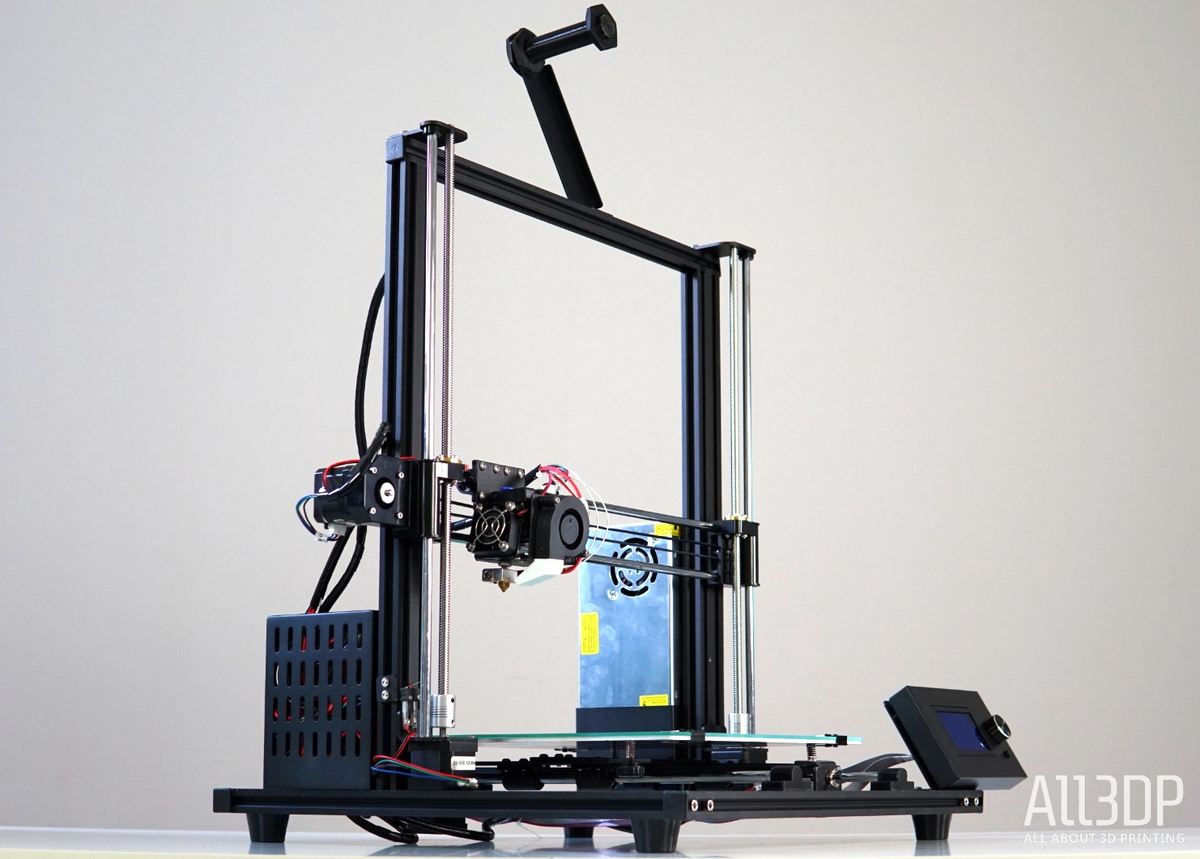
Judging by the similarity in name, you might suspect that the Anet A8 Plus is just a slightly tweaked version of the original. But the specifications showcase some stark differences between the two models.
Metal Frame
The Anet A8 Plus boasts an aluminum frame, a welcome upgrade from the original A8’s acrylic one which also stabilizes the machine more. The new frame design also provides a sleeker look, but, like its predecessor, the A8 Plus still has two Z-axis double-threaded rods running up in front of the frame.
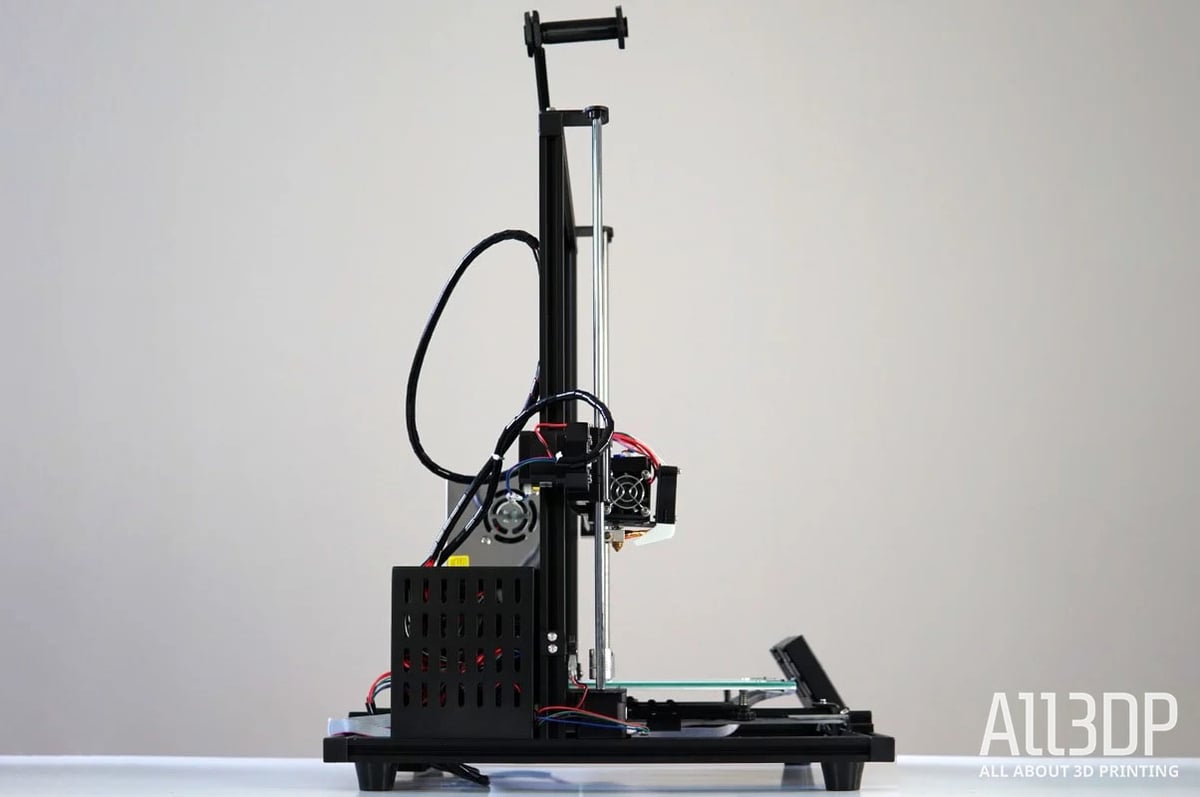
Bigger in size
Aside from the aluminum frame, the first difference you’ll notice between the Anet A8 and Plus model is that it has a much larger build volume. While the original offers a petite 220 x 220 x 240 mm, the Anet A8 Plus is equipped with a 300 x 300 x 350 mm build area, a substantial increase which puts it in competition with the Creality CR-10S or the Tevo Tornado,
Like with its predecessor, the machine uses a direct drive system for feeding its filament.
Motherboard and Over-Current Protection
The manufacturer has also upgraded the inner workings of the 3D printer, integrating a better motherboard and protection from over-current and short-circuiting. Considering that the original A8 was rightly chastised for being a fire hazard, the new electronics are certainly a welcome addition to the Plus.
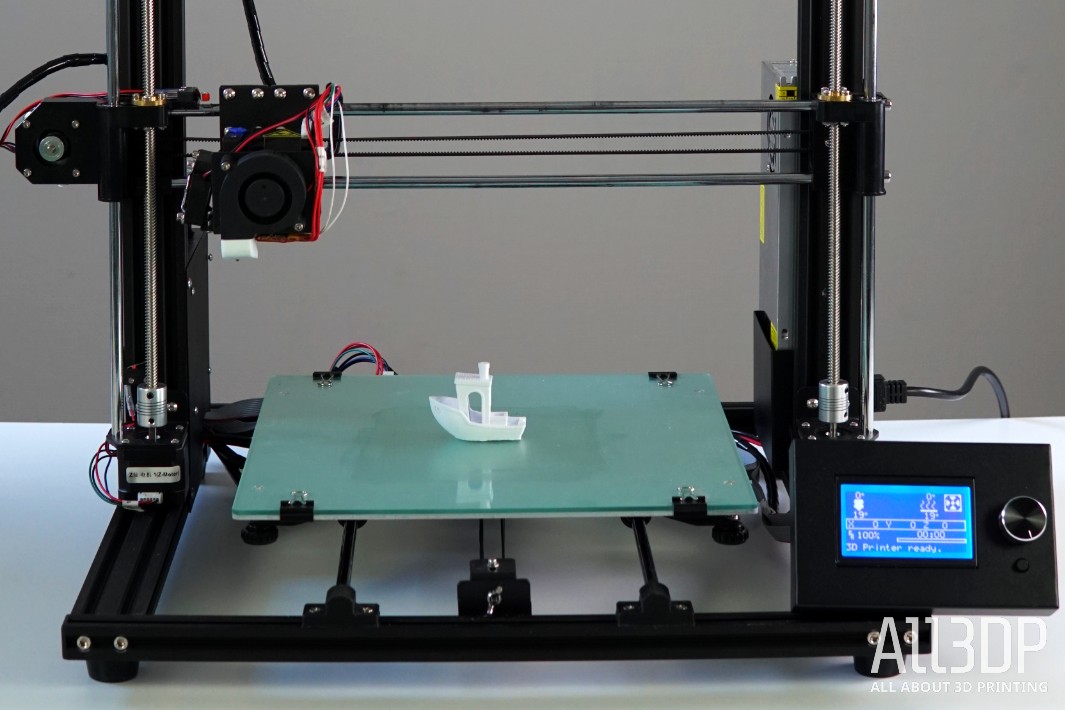
Glass Bed
The heated bed for the Anet A8 Plus is made from aluminum substrate and includes a removable glass bed. Anet also states that its easier to adjust the tightness of the X-axis and Y-axis belts.
We can confirm that tensioning mechanisms are included, consisting of a slider that can be moved by tightening a wing nut (Y-axis) or turning a screw (X-axis). However, given the rather bare-bones implementation, how helpful these mechanisms actually are in the long run is another question.
Tech Specs
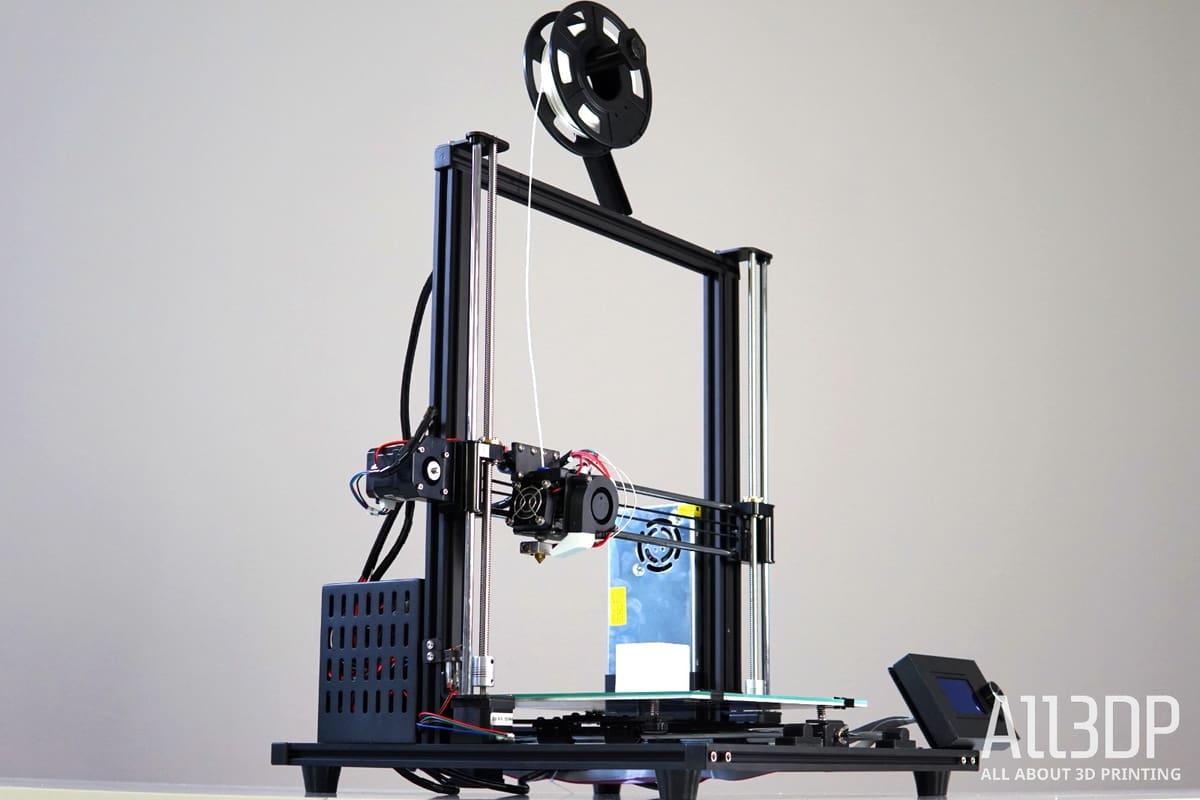
General Specifications
- Technology: Fused deposition modeling (FDM)
- Year: 2019
- Assembly: Kit or partially assembled
- Mechanical arrangement: Cartesian-XZ-head
- Manufacturer: Anet
3D Printing Properties
- Build volume: 300 x 300 x 350 mm
- Feeder system: Direct drive
- Print head: Single nozzle
- Nozzle size: 0.4 mm
- Max. hot end temperature: 250℃
- Max. heated bed temperature: 100℃
- Print bed material: Heated bed with a removable glass build plate
- Frame: Aluminum
- Bed leveling: Manual
- Connectivity: Micro SD
- Print recovery: No
- Filament sensor: Yes
- Camera: No
Materials
- Filament diameter: 1.75 mm
- Third-party filament: Yes
- Filament materials: ABS, HIPS, PETG, PLA
Software
- Recommended slicer: Cura
- Operating system: Windows, Mac OSX
- File types: G-code, JPG, OBJ, STL
Dimensions and Weight
- Frame dimensions: 612 x 462 x 573 mm
- Weight: 10 kg
Where to Buy
You can buy Anet A8 Plus from the online retailers below.
License: The text of "Anet A8 Plus Review: Hands On" by All3DP is licensed under a Creative Commons Attribution 4.0 International License.
CERTAIN CONTENT THAT APPEARS ON THIS SITE COMES FROM AMAZON. THIS CONTENT IS PROVIDED ‘AS IS’ AND IS SUBJECT TO CHANGE OR REMOVAL AT ANY TIME.

